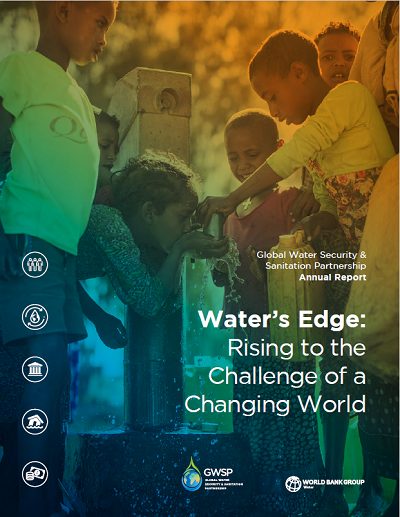Over the past 12 months, the world has seen water in its extremes. In the same year, the City of Cape Town, announced “day zero,” the day on which it was predicted the city would run dry, and a million victims of massive flooding were evacuated from Kerala, India. Floods, droughts, infrastructure shortfalls, poor quality and poor water resources management all made global headlines. Countries are facing a new normal where water is either “too much, too little, or too polluted.”

These disasters compound mortality and vulnerability in an already fragile world, where 2.1 billion people still lack access to safely managed water and 4.5 billion lack safely managed sanitation. The challenges are exacerbated by a cycle of conflict and violence that has produced more than 25 million refugees which, among other challenges, creates enormous demands for water and sanitation and imminent risks to the environment. It is increasingly clear that decisions about how water is managed have greater consequences than ever before.
It is within this context that the Global Water Security & Sanitation Partnership (GWSP), was launched last year. The pioneering efforts of the GWSP’s donors has enabled the partnership to serve as the World Bank Water Global Practice’s (GP) ‘think tank’, enabling a more systematic flow of knowledge between analytical work and operations and to our partners. The GWSP’s inaugural Annual Report ‘Water’s Edge – Rising to the Challenge of a Changing World’ is released today and marks the first year of achievements.
Water’s Edge shows how the GWSP’s investments in innovation and intellectual leadership helps client countries build capacity and strengthen the institutions, infrastructure, and inventiveness needed to adequately supply current and future generations with water, food, and energy. It also looks at how GWSP is helping shape the global debate and raise the profile of water in the global economy. And it explains how GWSP expands and deepens the impact of World Bank lending by supporting critical staff presence in low capacity countries.
GWSP is fully aligned with the vision of the Water GP – A Water-Secure World for All. It is also fully embedded within the Water GP; an integrated and influential part of the World Bank architecture. The World Bank has identified five priority themes to achieve the Sustainable Development Goal for water (SDG 6.) These themes of sustainability, inclusion, resilience, institutions and financing bring a renewed focus on holistic solutions that generate positive outcomes in the long-term. Water’s Edge offers many practical examples of how the GWSP is advancing the agenda of these themes, including how:
- Integrated approaches to sustainable sanitation and hydropower assessment are changing the way clients themselves approach complex challenges;
- Cutting-edge research and roundtables on inclusion are helping teams incorporate gender and citizen engagement into project components in the rural water, rural sanitation, education, and agriculture sectors;
- Governments are strengthening their countries’ resilience to disasters and other shocks through the application of a freshwater framework for improved decision making. Fragile and conflict-affected (FCA) countries are using new evidence to understand risks to water security;
- Global frameworks on institutions are helping clients understand the incentives needed to foster change, and operational lending is now more strategically focused on building capacity across multiple levels of government, simultaneously, and in a cohesive manner; and
- Technical assistance on building utility creditworthiness is helping to bridge the commercial finance gap so the sector can tap into new money while enhancing efficiency, affordability, and sustainability.
There are many more GWSP stories to tell and many of them are captured in Water’s Edge. The report caps off a busy 12 months. With a goal of raising $200 million in donor commitments by 2022, the GWSP is already influencing a large portion of the Water GP’s portfolio , equivalent to $13.8 billion. The influence of the program is due, in large part, to its commitment to building on and continuing initiatives started under its predecessor programs - the Water and Sanitation Program (WSP) and the Water Partnership Program (WPP). The report demonstrates how their spirit of innovation in water security and sanitation live on through the GWSP.
For more information:
- Check out the live report
- Read the feature story
- Listen to the podcast
- Download the full report


Join the Conversation